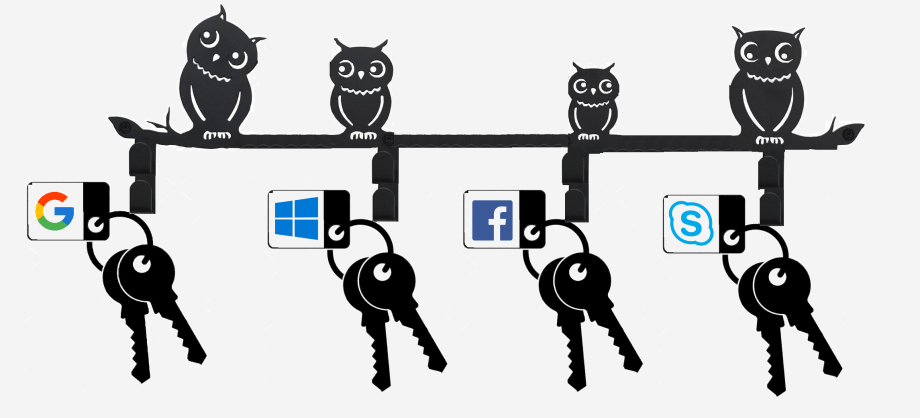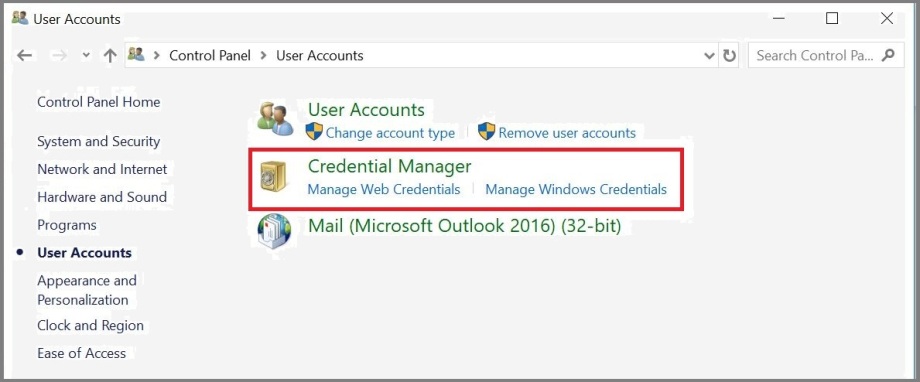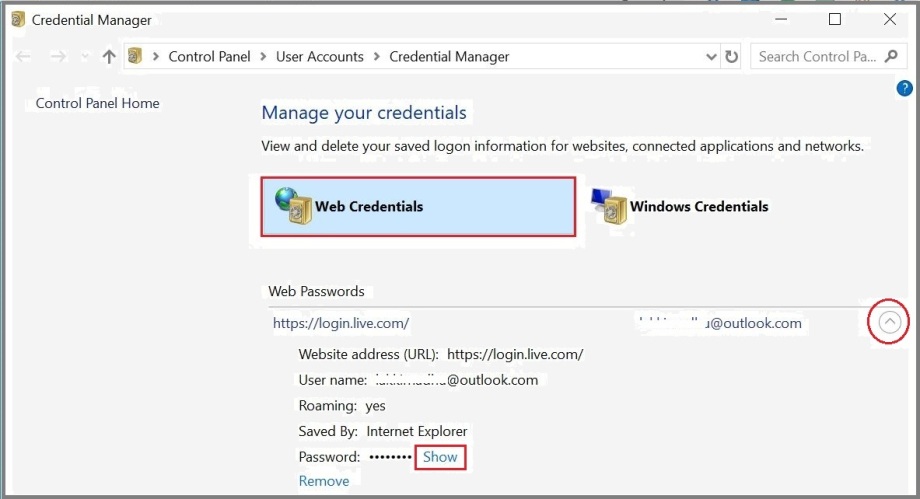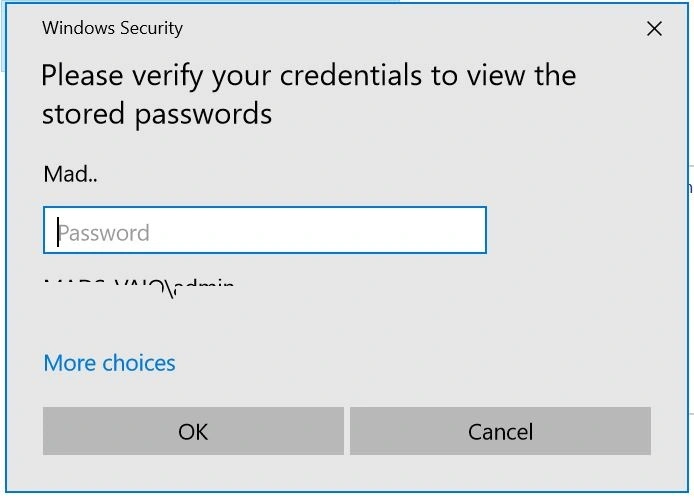How To Find Passwords On Windows 10
For years users have wanted to save fourth dimension and effort when accessing servers on the network, Spider web sites requiring credentials, etc. Then, there have been options in the operating system to save usernames and passwords for faster and easier access. I am sure you take seen this, either in a prompt or a checkbox, asking you lot to save the password. In Windows, you have the ability to shop the credentials for resources that you admission ofttimes, or just don't want to have to remember the password. Although this is a time-saving option, you might want to reconsider using this feature due to security problems.

Windows stores the passwords that yous utilize to log in, access network shares, or shared devices. All of these passwords are stored in an encrypted format, but some passwords easily are decrypted using your Windows login password.
Windows stores the login credential details in a hidden desktop app namedCredential Manager. Here is how to find this app, how to see which credentials are stored past Windows and how to manage them:
What is the Credential Manager?
Credential Manager is the "digital locker" where Windows stores log-in credentials like usernames, passwords, and addresses. This information can be saved past Windows for use on your local computer, on other computers in the aforementioned network, servers or internet locations such as websites. This data tin can be used by Windows itself or past programs similar File Explorer, Microsoft Office, Skype, virtualization software and so on. Credentials are carve up into several categories:
- Windows Credentials – are used just past Windows and its services. For example, Windows can use these credentials to automatically log you into the shared folders of some other computer on your network. It can also store the password of the Homegroup you take joined and uses it automatically each time you admission what is beingness shared in that Homegroup. If you type a wrong log-in credential, Windows remembers it and fails to access what you lot need. If this happens, you can edit or remove the incorrect credential, as shown in later sections of this article.
- Certificate-Based Credentials – they are used together with smart-cards, more often than not in circuitous business network environments. About people will never need to use such credentials and this section is empty on their computers. However, if yous desire to know more near them, read this commodity from Microsoft: Guidelines for enabling smart card logon with third-political party certification authorities.
- Generic Credentials – are defined and used by some of the apps you install in Windows and so that they get the authorization to utilise certain resources. Examples of such apps include OneDrive, Slack, Xbox Live, etc.
- Web Credentials – they correspond login information for websites that are stored by Windows, Skype, Internet Explorer or other Microsoft apps. They exist only in Windows 10 and Windows eight.1, just not in Windows 7.
How to open up the Credential Manager in Windows:
The method that works the aforementioned in all versions of Windows. First, open the Control Panel and then go to"User Accounts –> Credential Manager."

Y'all'll discover in that location are two categories:Spider web Credentials and Windows Credentials. The spider web credentials volition accept any passwords from sites that you saved while browsing in Internet Explorer or Microsoft Edge. Click on the down arrow and so click on theBear witness link.

You'll have to type in your Windows password in social club to decrypt the password.

f you click on Windows Credentials, you 'll run across fewer credentials stored hither unless you work in a corporate surroundings. These are credentials when connecting to network shares, dissimilar computers on the network, or network devices such every bit a NAS.

In the aforementioned way, I'll besides mention how you can view Google Chrome saved passwords. Basically, each browser has the same characteristic, then you tin can practice the aforementioned thing for Firefox, Safari, etc. In Chrome, click on the three dots at the acme right and then click onSettings. Curl down and then click on Passwords.
Under Passwords, enable Offer to save your web passwords. You can view the saved passwords.

History of the Credential Director:
According to a 1996 Network Applications Consortium (NAC) written report, users in large enterprises spend an average of 44 hours per year performing login tasks to access a set of four applications. The aforementioned study revealed that seventy percent of calls to companies' Help desks were password-reset requests from users who had forgotten a password.
Unmarried sign-on (SSO) is an approach that attempts to reduce the fourth dimension users spend performing login tasks and the number of passwords users must remember. The Open Group, an international vendor and technology-neutral consortium dedicated to improving business efficiency, defines SSO every bit the "mechanism whereby a unmarried action of userhallmarkand authorization tin permit a user to access all computers and systems where that user has admission permission, without the need to enter multiple passwords"
SSO solutions come up in two flavors: solutions that deal with one gear up of user credentials and solutions that bargain with multiple sets of user credentials.
A good example of the starting time type of solution is a Kerberos hallmark protocol-based SSO setup.
A good case of the second type of solution is the Credential Manager. Credential Manager is a new SSO solution that Microsoft offers in Windows Server 2003 and Windows XP. It's based on a secure client-side credential-caching mechanism.
The Windows 2000 (and earlier) requirement that users must re-enter the aforementioned credentials whenever they access resources on the same Net or intranet server can be frustrating for users, especially when they accept more than i set of credentials. Administrators ofttimes must cope with the same frustration when they have to switch to alternative credentials to perform administrative tasks. Credential Managing director solves these problems.
Determination:
Browser-stored passwords get in piece of cake for hackers to get inside your network
allowing a browser to "remember" passwords can pose a major security gamble considering:
- Password recovery tools can easily find these passwords.
- Browsers typically do non use stiff encryption for these passwords.
- Users do non monitor and rarely modify these passwords once they store them in their browser.
Do NOT USE THE "Think PASSWORD" Characteristic ON APPLICATIONS SUCH AS WEB BROWSERS (Google Chrome, Mozilla Firefox, Safari, Internet Explorer etc.)
For IT Admins:
Get your FREE Browser-Stored Password Discovery Tool from Thycotic to quickly and easily identify risky storage of passwords in web browsers amidst your Active Directory users. You get reports that place:
- Superlative ten mutual machines with browser-stored passwords
- Acme 10 common users with browser-stored passwords
- Height ten most frequently used websites with browser-stored passwords
The Browser-Stored Countersign Discovery Tool is free. Y'all can re-run the Browser-Stored Password Discovery Tool at whatsoever time to identify browser countersign risks and help enforce compliance with web browser security policies.
Source: online-tech-tips, digitalcitizen, techgenix,
Source: https://lakkireddymadhu.com/2018/11/26/how-to-find-hidden-saved-passwords-in-windows-10/
Posted by: davisinscurs36.blogspot.com


0 Response to "How To Find Passwords On Windows 10"
Post a Comment